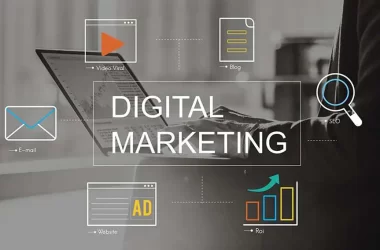Printing with thermography, which is a relatively new printing technology, has a number of advantages over printing with more conventional methods. The printing process known as thermography produces more accurate and consistent results while using significantly less paper and ink. Thermal prints are not only resistant to fading but also resistant to smearing, which makes them excellent for use in areas with significant foot traffic. This innovative printing technology is perfect for businesses that want to lower their printing costs without sacrificing quality, and it can do both. The printing industry will undoubtedly undergo a sea change as a result of the advent of
thermography printing, and businesses that are early adopters of this cutting-edge technology will be at the forefront of this exciting development.
How Should One Make Use of Printing Using Thermography?
Printing using thermography involves using heat-sensitive toner to produce raised images on paper. This printing method is known as thermography printing. This technique is revolutionary and might be of great use to a number of different companies. The thermographic process can be used to generate a wide variety of printed goods, including the following:
- Thermography printing allows for the creation of business cards that feature text or graphics that are elevated. By adding a luxurious feel, this printing approach can give your business cards an air of sophistication, making them stand out from the crowd.
- Thermography printing can also be used to generate letterhead, and this method can be used to produce letterhead with raised text or graphics. If you choose to print your letterhead using this method, the finished product can have a more polished look and feel.
- Envelopes that have been thermographed can lend an air of sophistication to the mailings you send out. This printing method can be used to produce emails that have a higher chance of being opened and read by the intended recipients.
- Brochures: Using thermography printing, it is possible to create brochures that have text or visuals that are elevated. Your brochures may have added depth and dimension once they have been printed, which will increase both their appeal and their utility.
- Invitations to wedding ceremonies Thermography printing allows for the creation of elegant invitations to wedding ceremonies. If you use this method of printing, the invitations you send out may have a more polished appearance and stand out more from the throng.
- Birth Announcements: Thermography printing provides stunning visuals that enable blind people to see their loved ones. This technology is used for the production of birth announcements.
The Planning and Development of Organizational Structures
Trade printing companies can take many different forms and can be of varying sizes; their customers are businesses. There are certain trade printing companies that only specialize in certain products, while others offer a more comprehensive selection of printing services. While some commercial printing companies put an emphasis on providing excellent products, others seek to offer the most competitive prices possible. Your specific requirements, as well as the constraints placed on your budget, will direct the kind of commercial printing company that you go with. Go for a printing service that specializes in the trade if you want your materials to be of high quality. If money is tight, you should work with a trade printing supplier that offers their services at a reduced rate. Check out the quality of customer service offered by the commercial printing company as well. Read all of the reviews first, then make your final choice.
What Are the Advantages of Working With a Contract or Trade Printer?
Choosing to work with a trade printing company rather than a contract printer can result in a number of beneficial outcomes. To begin, commercial printing companies offer a significantly wider range of services than home printers. They may also bind your documents and mail them out to your customers in addition to printing them. Additionally, trade printers offer turnaround times that are noticeably shorter than those of contract printers. They are aware of how essential it is to fulfill deadlines, which means that you can have peace of mind knowing that your work will be completed on schedule. Last but not least, the order minimums required by trade printers are frequently a great deal smaller than those required by contract printers. This means that you can print a smaller number of copies of the book without being subject to additional costs. When looking for a printer, the most logical option is to go with a commercial printing business because of the many advantages they offer.
A Number of Components Are Utilized in Commercial Printing Facilities
Generally speaking, an input tray, an output tray, a print engine, and a controller are considered to be the four most important components of a commercial printer. The controller is the operation’s mastermind and is in charge of everything. It is responsible for managing the entire printing process and feeding information to the print engine. The component of a printer known as the print engine is responsible for moving ink from the cartridge to the paper. One of its many moving pieces is a set of rollers that transports ink from a reservoir to the printing surface. This is just one of its many moving parts. Before the paper is transferred to the print engine, it is first loaded into the input tray of the printer. Pages that are being printed are extracted from the device and positioned in the output tray. A hole puncher and a stapler are two of the optional accessories that come with certain office printers. However, at its most fundamental level, a commercial printer is a rather straightforward piece of equipment that can rapidly and easily produce pages of high quality.
Printers For Commercial Use
Commercial printers are responsible for serving a vast and varied customer base. Desktop printers and large-scale printing equipment are both examples of the diverse forms and dimensions available for commercial printing machines. Despite this, each and every commercial printer is made up of a few essential parts. The print head, the ink supply system, and the paper feeding mechanism are all components that make up this part. The component of a printer known as the “print head” is responsible for spreading ink onto paper or another surface. Both the ink delivery system and the device that feeds paper or other media into the printer are referred to as the “media feeding mechanism.” The ink delivery system supplies the print head with ink. All commercial printers should build their businesses on these three pillars as their foundation. Commercial printers are machines that, depending on the task at hand, are capable of printing text and graphics on a wide variety of papers in a number of different sizes.
Printers That Are Used For Thermography
A device known as a commercial printer is one that is capable of printing both text and images on a variety of substrates, such as paper and card stock. There are many different kinds of industrial printers, and each one performs a specific function. There are many different kinds of commercial printers, and one of them is a thermography printer. This printer creates graphics that appear to burst off the page by utilizing heat. Before the images are created, a powdered component is applied to the paper where they will be printed. The powder is left behind in the area where the imprint will be visible. Following that, the paper is moved around in a heated room while being manipulated. The powder will melt as a result of the heat, which will result in an improved image. The final step is to fix the picture after the paper has been given sufficient time to cool. Printers that use thermography are frequently utilized in the production of items such as invitations, business cards, and other documents that are expected to have an expert appearance.
Printing Technology Developments for Businesses
Printing for commercial purposes has been around for quite some time. Since Johannes Gutenberg introduced the world to the printing press in the 15th century, there has been printing for commercial purposes. Commercial printers have been responsible for the production of books, newspapers, and a variety of other printed goods for hundreds of years. However, around the beginning of the nineteenth century, new printing technologies such as lithography and rotary printing were developed. At the close of the nineteenth century, commercial printing was a well-established business that took advantage of these innovative methods.
Printing for commercial purposes is still an essential component of the modern business world. Commercial printers produce a wide variety of printed items, including packaging for products and marketing collateral, among other things. Prints of the highest possible quality may now be produced by professional printers at prices that are lower than they have ever been previously, thanks to digital printing.
To obtain additional details, please go to
www.teamconceptprinting.com.





